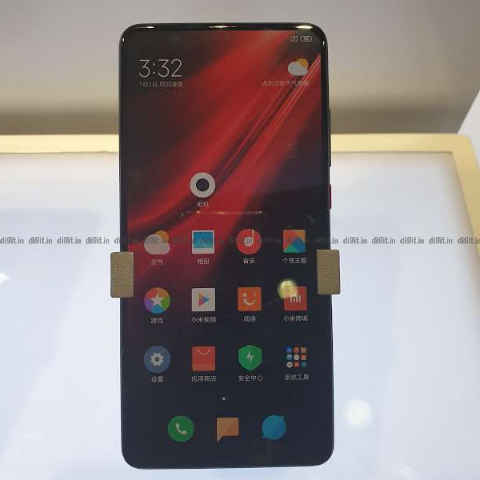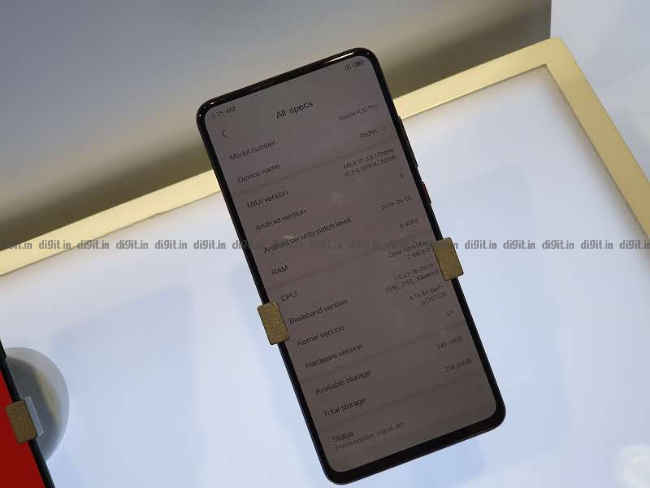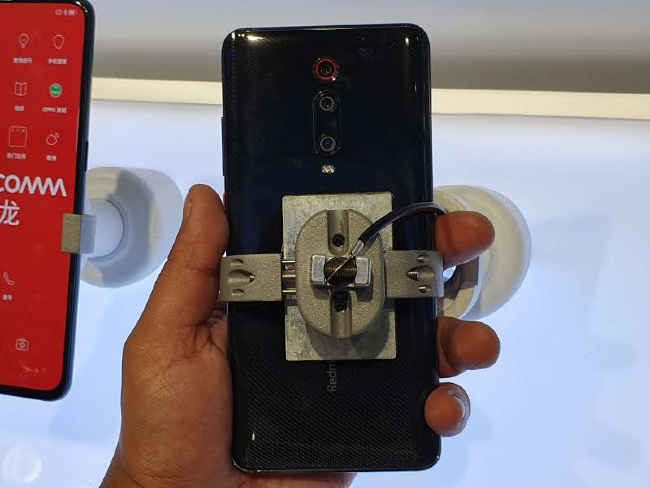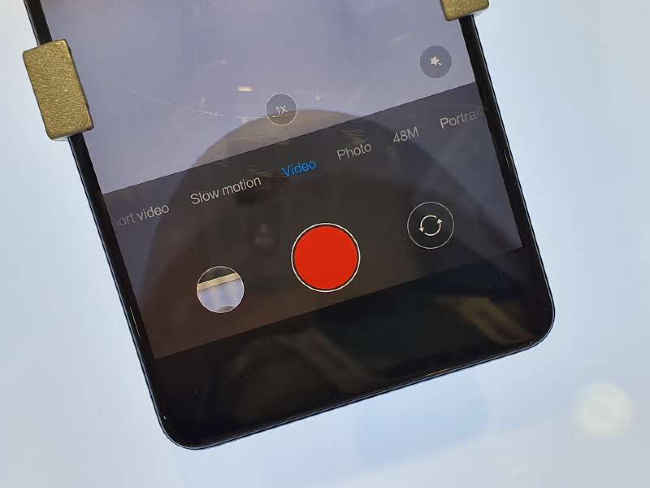Xiaomi Redmi K20 Pro Hands On: Shows signs of a flagship killer
The Xiaomi Redmi K20 Pro was spotted the MWC Shanghai showfloor.
With flagship specs under the hood, the K20 Pro is surely a force to reckon with.
However, is it worthy of the flagship killer tag?

Looking around the showfloor at Mobile World Congress Shanghai, I spotted the Xiaomi Redmi K20 Pro sitting unattended at the Qualcomm booth, and couldn’t help but pick it up to see what all the hype is about. Xiaomi is gearing up to launch the smartphone in India, along with the Redim K20, sometime next month. The company is already touting it as the fastest smartphone money can buy and an out and out flagship killer with that knockout punch. Having used the phone for a few minutes, I could understand what all the hype is about. This isn’t the first time a smartphone is being hyped to be the David that can take on the Goliaths of the smartphone industry.
 Survey
SurveyA year ago, another Xiaomi sub-brand managed to create a similar craze around its new launch. I’m talking of the Poco F1 that must have given companies like OnePlus some sleepless nights. It looked like a harmless mid-range smartphone but with the latest flagship hardware packed inside, needless to say, it ran like a racehorse. The Redmi K20 Pro is also something very similar. But thankfully, it doesn’t look like a budget smartphone at all. Instead, Redmi has spent quite some time fine tuning the design so that it exudes the class, that budget flagships like OnePlus 7 and the Honor 20 possess. But is it really the fastest smartphone? More importantly, is it really the flagship killer that Xiaomi is touting it as?
These are two very difficult questions to answer after spending about 20 minutes with a smartphone, but the small window of time did give me a glimpse of things to expect and the things I would want to test out when the Redmi K20 Pro eventually launches in India.
First things first, this is the Redmi flagship everyone was waiting for. It has the Qualcomm Snapdragon 855 platform inside, coupled with up to 8GB RAM and 256GB storage. The spec-sheet revealed the RAM module used is LPDDR4X while the storage is UFS 2.1. If you compare, the OnePlus 7 Pro uses the latest UFS 3.0 storage that promises 3x faster data transfer while the RAM module used is the same. Only, OnePlus goes a step further offers the OnePlus 7 Pro in a 12GB RAM variant as well. However, the price of that model is nowhere close to where budget flagships and ‘flagship killers’ operate. On top of that, the Redmi K20 Pro has a 4,000mAh battery with support for 27W fast charging based on Qualcomm’s QuickCharge 4+ standards. At the launch event, Xiaomi had claimed the battery can be topped up to full capacity in under 73 minutes. That’s pretty impressive, but going by what Vivo unveiled at MWC 2019, that number could get outdated really fast!
Now, all this hardware is pretty standard in the budget and premium flagship smartphones these days. So what makes Redmi claim this to be a flagship killer and the fastest smartphone? Xiaomi claims the K20 Pro apparently tops the AnTuTu benchmark charts, and this score is being used as the foundation for the argument. While we will be testing out the smartphone when it eventually land up in our labs, the high AnTuTu score could be the result of some deep-seated optimisations Redmi has made in the K20 Pro.
For one, the K20 Pro comes with Mi Turbo. It’s not really a feature that you can turn on with a flick of a button, but a combination of features that makes the K20 Pro utilise resources more efficiently. This includes I/O defragmentation, which should be something similar to what we do with PC hard drives. A defragmented hard drive improves I/O speed and loading times. No wonder Xiaomi is also claiming faster app startup speeds in the phone’s official spec-sheet.
Then there’s Game Turbo, which sounds and works similar to many other game boosting modes found in Oppo, Vivo and OnePlus smartphones. When gaming with the mode turned on, the Redmi K20 Pro performs better resource scheduling, offer 4D haptic feedback, improve the touch response and the visual fidelity of the display. While I didn’t get the time to play a game on the phone at the booth, I am told you can overlay GPU, CPU and FPS numbers while gaming which is pretty nifty for both a gamer, and me, the reviewer.
These are essentially the arguments Xiaomi is making in favour of calling the Redmi K20 Pro the fastest smartphone and a knock out punch to the ‘expensive’ budget flagships. But there’s more.
The Redmi K20 Pro looks pretty premium. An all-glass design is a direct departure from the plastic bodied Poco F1. It certainly doesn’t look cheap anymore. In fact, I found it to be quite hefty. On the front is a 6.39-inch AMOLED display made by Samsung and supports HDR content playback. We can’t say whether the global variant will come with support for Netflix HDR or just stick to HDR videos on YouTube. The display stretches all the way to the edges with no sign of a notch or a punch hole. Instead, the 20MP front camera is housed in a pop-up mechanism that lights up as it rises. The speed of the pop-up module rising up is similar to what we have seen in other pop-up camera smartphones like the OnePlus 7 Pro, which is definitely a good thing, but I’m not sure how durable it is. Xiaomi did claim the units are tested by simulating 18 months of usage which should sound reassuring. Furthermore, there’s also an in-display fingerprint sensor which I did try out and was surprised by how fast and accurate it was. 5 out of 5 times it worked and with blazing fast speed.
On the back is a triple-camera setup, a sight common in both mid-range and premium smartphones these days. The camera stack houses a Sony IMX586 48MP sensor with f/1.75 aperture lens along with an 8MP telephoto lens with 2X zoom and a 13MP ultra-wideangle camera with f/2.2 aperture and 123-degree field of view. Once again, testing the camera was not possible in such a short time, but knowing how well the Redmi Note 7 Pro performs in tricky situations, the K20 Pro sounds promising. There are some new modes like Moon mode, street photography mode and the likes, which we will try out once the phone lands in India. What’s missing is OIS or any sort of stabilisation, which is now present in most budget flagship smartphones.
The K20 Pro runs on MIUI 10 based on Android 9 Pie. The UI, as a result will feel familiar to any Redmi user, and in that regard, the app drawer is still missing.
First Impressions
The Xiaomi Redmi K20 Pro has all the ingredients to be an excellent budget flagship, if everything in the phone works as advertised. Based on the few minutes I spent with the phone, it seemed pretty impressive both with its design and the features it has to offer. However, whether is the fastest phone ever is still too early to answer. As for it being the flagship killer, I have mixed feelings. OnePlus used to claim that title till the OnePlus 3T, after which there was a definite shift towards the premium. The void left by OnePlus in that budget flagship segment was quickly filled by a handful of offerings from Asus, Honor and the likes. Heck, even Google joined the party this year with the Pixel 3a while two gaming smartphones are well-poised to be worthy successors to the tagline this year. The Redmi K20 Pro, as a result, feels like yet another smartphone trying to fill the gap left behind by OnePlus after it decided to go premium. Nevertheless, provided Xiaomi prices the K20 Pro aggressively, the value proposition of this budget flagship can be overwhelming to potential buyers.


